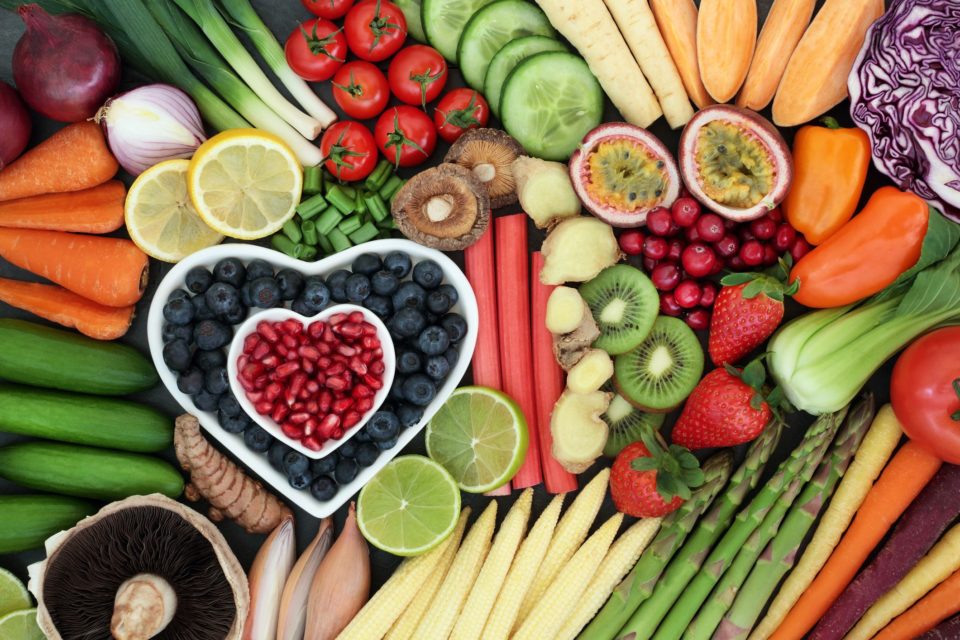Here’s How A Nutritionist Suggests Shopping If You’re On A Tight Food Budget

With help from few nutritionists, here are nine different ways you can stretch your dollar and still be able to eat healthily during this unstable time.
Millions of people have experienced a hardship, likely due to the pandemic, whether it’s a job loss, a decrease in pay, or an increase in medical bills,that’s significant enough in their lives to re-evaluate their needs and ask for assistance from the government.
But just because finances might not be the same as they used to be, eating and staying healthy is necessary to stay, well, alive, so it’s still important to learn how to shop for the times,especially if you’re on a very tight budget.
With help from few nutritionists, here are nine different ways you can stretch your dollar and still be able to eat healthily during this unstable time.
1. Come up with a budget.
If you’re not sure what your food budget should be, every month the USDA publishes a food budget that ranges from the “thrifty plan” to the “liberal plan.” It includes budgets for families of varying size as well as for single adults. For example, they suggest females between 19 and 50 who need to stick to the “thrifty plan” should budget no more than $39.70 a week or $172.20 a month for food (of course, it depends on where you live in.
There are four degrees of cost plans, and it’s a great guide for those who don’t even know where to start when it comes to budgeting money for food.
2. Get creative.
Because you don’t want to waste any food that you’ve bought, hang on to those leftovers and find a use for them. Take that canned salmon and make a salmon burger. And tuna can be made into delicious croquettes. Ultimately, you want to find alternative ways to make your food stretch rather than throwing out the food you think may not look right or is no longer a viable option.
3. Never shop on an empty stomach.
Similar to not going into a grocery store stoned, don’t go food shopping hungry either. If you do, there’s a very good chance you’ll stray from your list, go way over budget, and head home realizing you’re going to have to put your electric bill on hold for one more month. Instead, go food shopping after having had a meal.
4. Buy in bulk.
If there’s one thing that every nutritionist and dietician suggests, it’s to buy in bulk—especially things like rice and beans that have a very long shelf life.
“This does not mean to stock up on large quantities of highly processed foods with empty calories, such as chips, candy, packaged pastries, and crackers,” says Lynell Ross, a certified health and wellness coach, nutritionist, and founder and managing editor of Zivadream, an education advocacy website dedicated to helping people improve their lives. “If you are on a tight budget, then every dollar needs to count towards nutritious foods, such as fruits, vegetables, whole grains, dairy, meat/poultry, spices, and healthy oils. Buying beans, rice, and whole grains in large packages will last you a long time and save a lot of money over purchasing prepackaged and seasoned rice mixes.”
5. Buy canned fish.
Canned fish isn’t only your best alternative but a great source of protein and omega-3 fatty acids, according to Rima Kleiner, MS, RD, from Dish on Fish. As Kleiner explains, canned or poached tuna, salmon, and sardines aren’t just easy on the wallet but “promote a healthy heart, brain, eyes, and immune system.”
6. Don’t shun frozen vegetables.
Contrary to what you might think, freezing vegetables can help retain the same amount of nutrients as fresh items have, as long as you don’t let them sit in the freezer too long. Certain veggies and fruit can lose their nutrients if they’re not used within a year.
7. Get in the habit of meal prepping.
If you prep in advance, you can avoid being bogged down every day making meals for just yourself or, if you have tiny mouths to feed, for your family, too.
“When you set aside a few hours in a single day and dedicate it to meal preparation for the entire week, there’s no temptation to pick up takeout or convenience food later in the week,” says Aimée Ricca, an ISSA certified nutritionist.
8. Avoid fast food.
It’s understandable: Fast food is cheap, convenient, and you can pick it up, eat it, and not have to put in the labor of cooking it. ” Of course, it’s important to be aware that there are plenty of situations where fast food is a viable option for extremely tight budgets or situations where cooking is simply not an option. But if you have the ability to cook food at home right now, it’s never a bad idea to opt for home-cooked meals over fast food to feel healthy.
9. Look above and below eye level.
What that means is that the most expensive items tend to be at eye level in most grocery stores, according to Amanda Izquierdo, MPH, RD, LDN. “Look up and down on the shelves for less expensive store brands,” says Izquierdo. It’s important to realize that when it comes to name-brand foods, you’re paying for the name and not the product. A can of green beans by Green Giant most likely isn’t going to taste any different or any have fewer nutrients just because of the name on the label.





